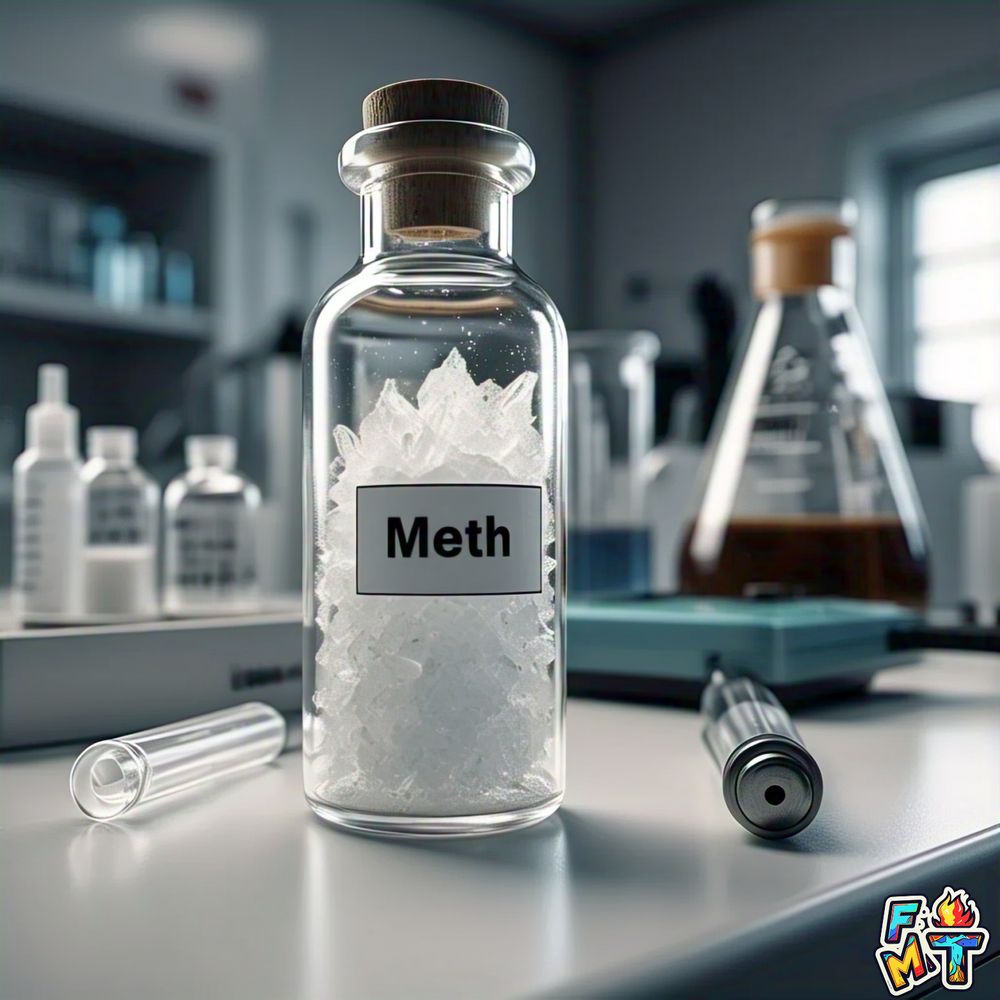Blog
How Long Does Meth Stay In Your System?
Introduction: Understanding Meth and Its Effects on the Body
Methamphetamine is a powerful and highly addictive stimulant drug that affects the central nervous system. It is known by several street names, including meth, crystal, crank, and ice. People use meth for its euphoric effects, but prolonged use can lead to severe physical and mental health issues. One of the most critical concerns surrounding meth use is understanding how long meth stays in your system and how it can be detected in various drug tests.
Knowing how long methamphetamine stays in the body is essential for those who may be subject to drug testing, those recovering from addiction, and anyone seeking information about the effects of meth on health. Detection time varies depending on several factors, such as the methamphetamine half-life, the type of drug test used, and individual metabolic differences. This article explores the various detection windows for meth in different bodily systems, including urine, blood, saliva, and hair, while also providing tips on how to flush meth out of your system.
How Long Does Meth Stay in Your Body?
Methamphetamine Half-Life and Metabolism
The half-life of a drug is the time it takes for half of the drug to be eliminated from the body. Methamphetamine has a half-life ranging from 10 to 12 hours, which means it takes this amount of time for half of the drug to be metabolized and cleared from the body. However, it can remain in the system for days, depending on various factors, including the frequency of use, individual health conditions, and the method of drug administration.
The metabolism rate of methamphetamine varies from person to person. Some individuals metabolize the drug more quickly due to genetic factors, age, and liver function, while others may take longer to clear it from their system. Methamphetamine is metabolized in the liver and excreted through the urine. The time it stays in your system also depends on how long you’ve been using meth and the amount used.
Factors Affecting Meth Detection Time in Your System
There are several factors that influence how long methamphetamine stays in your system. These include:
- Age, weight, and overall health: Younger individuals with a healthy metabolism may clear the drug faster. Those with liver or kidney issues may experience longer detection times.
- Frequency and duration of meth use: Chronic users may have meth stored in their fat cells, leading to longer detection windows.
- Type of drug test used: Different tests have varying sensitivity and detection periods. Meth stays in urine, blood, saliva, and hair for different lengths of time.
These factors play a critical role in determining how long meth stays in the body and how long it can be detected through various testing methods.

How Long Does Meth Stay in Your Urine?
Urine Test Detection Window for Methamphetamine
When it comes to detecting methamphetamine, urine testing is one of the most common methods used. Methamphetamine can be detected in the urine anywhere from 1 to 4 days after use, depending on the factors mentioned earlier, such as frequency of use and individual metabolism. In the case of chronic meth use, it may remain detectable in urine for up to a week or more.
For a single use of meth, the drug typically remains detectable in the urine for about 1 to 3 days. However, for regular users or those with a higher body fat percentage, methamphetamine may linger for up to 10 days.
Methamphetamine Urine Test Sensitivity and Cutoff Levels
Urine tests for methamphetamine typically have a cutoff level—a threshold amount of meth that must be present to give a positive result. The sensitivity of the test is important, as more sensitive tests can detect lower levels of the drug in the urine. Most standard urine tests have a cutoff level of 500 ng/mL, but more specialized tests can detect methamphetamine at lower concentrations.
How Long Does Meth Stay in Your Blood?
Blood Test Detection Period for Methamphetamine
When performing a blood test, methamphetamine can typically be detected within the first 12 hours after use, but it can stay in the blood for up to 1 to 3 days, depending on usage patterns and metabolism. Blood tests are much more invasive and less commonly used for routine drug testing, but they are highly accurate.
The window for detection in the blood is shorter than that of urine or saliva tests, so individuals who are tested within hours of meth use may show a positive result. The blood test can detect both methamphetamine and its metabolites.
How Long Does Meth Stay in Your Saliva?
Saliva Test Detection Time for Meth
Methamphetamine can be detected in saliva for approximately 1 to 4 days after use. Saliva tests are non-invasive, making them a convenient option for drug testing. The detection window for methamphetamine in saliva is typically shorter compared to urine, which makes this test ideal for detecting recent use.
Like blood tests, saliva tests can detect methamphetamine relatively quickly, which is why they are often used for roadside or instant drug testing.

How Long Does Meth Stay in Your Hair?
Hair Test Detection Period for Methamphetamine
The detection window for methamphetamine in hair samples is much longer than in other fluids. Hair tests can detect methamphetamine use for up to 90 days or even longer, depending on the length of the hair sample taken. This makes hair follicle testing the most accurate method for detecting long-term meth use, though it is typically more expensive and less commonly used than urine tests.
Hair tests detect drugs by measuring the presence of substances that have been absorbed into the hair follicle through the bloodstream. Because hair grows slowly, drugs may be detectable for a longer period of time, even after they have been cleared from the blood and urine.
Methamphetamine Withdrawal Timeline and Detoxification
Methamphetamine Detox Time
The detox process for methamphetamine varies greatly depending on the individual and the severity of their addiction. While the drug may stay in the system for several days, the detoxification period can last from a few days to a few weeks. Meth withdrawal symptoms typically begin within 24 hours after the last dose and can last for several days.
It’s important to note that detoxing from methamphetamine should be done under medical supervision, as withdrawal can be physically and psychologically intense.
How to Detox From Methamphetamine Safely
If you or someone you know is trying to detox from meth, there are a few steps you can take to help the process:
- Hydrate: Drinking plenty of water helps flush meth out of the system.
- Healthy diet: Eating a balanced diet can support the body in detoxification.
- Exercise: Regular physical activity can help speed up metabolism and encourage the elimination of toxins.
- Seek professional help: Medical supervision ensures that detox is safe and effective.
Conclusion: Key Takeaways on Methamphetamine Detection Time
In conclusion, the length of time methamphetamine stays in your system depends on a variety of factors, including the type of test used, the frequency of use, and individual metabolic rates. Urine tests, blood tests, saliva tests, and hair tests all offer different detection windows, with hair tests being the most reliable for detecting long-term use. Understanding these factors is essential for anyone concerned about drug testing or the impact of methamphetamine on the body.

Frequently Asked Questions (FAQ)
- How long does meth stay in your urine?
- Meth can be detected in urine for 1 to 4 days, but it may stay longer for frequent users.
- Can meth be detected in saliva?
- Yes, meth can be detected in saliva for 1 to 4 days after use.
- How long after using meth can it be detected in blood?
- Blood tests can detect meth for 1 to 3 days after use.
- How long does meth stay in your hair?
- Hair follicle tests can detect meth for up to 90 days or longer.
- What factors influence how long meth stays in your system?
- Factors include age, weight, health, and frequency of use.
Please visit Dinounicorn.com or Freshmilktee.com to support us. Thank you!

